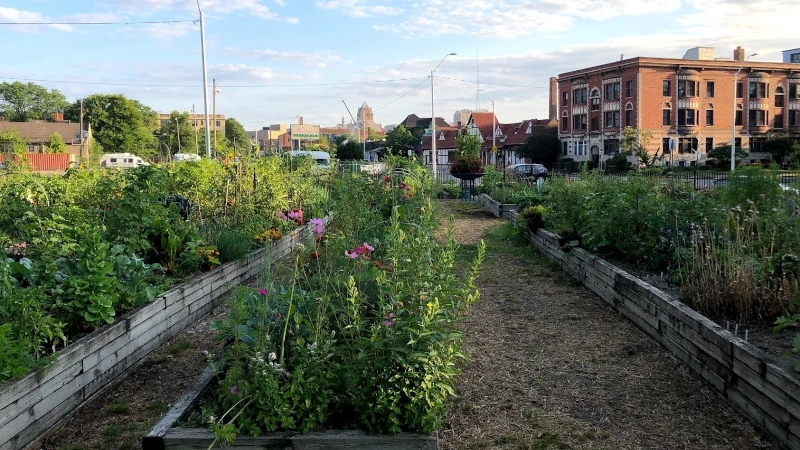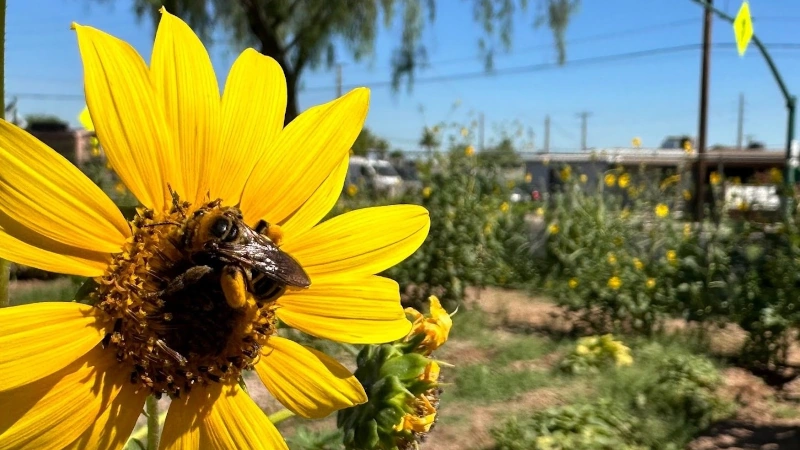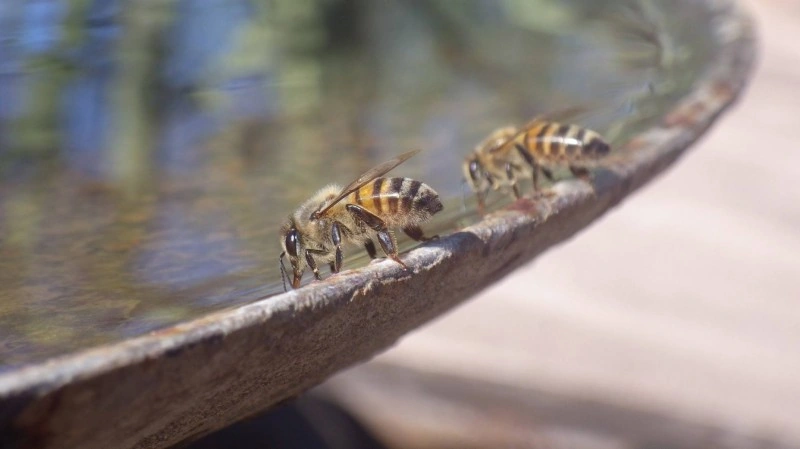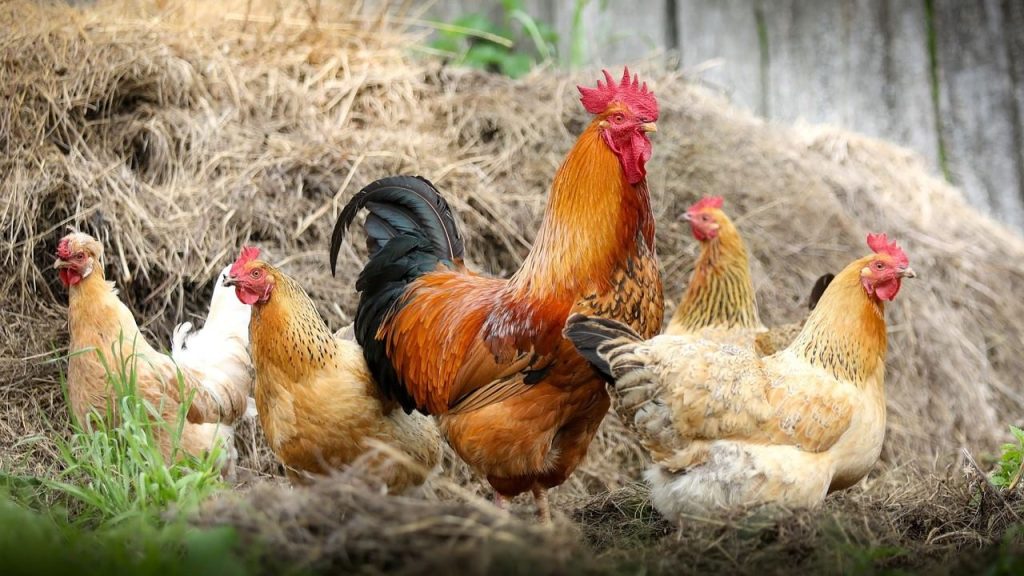USDA-funded project tracked the temperature and hydration of bees in 10 urban heat islands across the U.S.
Bowling Green State University recently led a multi-year study to determine the effects of urbanization on bees nationwide, revealing the dangers some pollinators face as the climate continues to warm and its potential impact on food production.
Kevin McCluney, Ph.D., an associate professor of biological sciences at BGSU, and his research team spent three years monitoring the health and abundance of bees at 60 urban farms and gardens in 10 cities across the United States, including Atlanta; Augusta, Georgia; Denver; Detroit; Durham, North Carolina; Fort Collins, Colorado; Phoenix; Raleigh, North Carolina; Toledo, Ohio; and Tucson, Arizona.
Feature Image – BGSU researchers spent three years tracking the body temperature and hydration of dozens of bee species in urban heat islands across the U.S. Credit: BGSU
“It is vitally important to understand the connection between the climate and pollinator health,” McCluney said. “It’s estimated that the value of crops pollinated by bees is worth about $24 billion per year in the U.S. Bees are incredibly important to our food systems, which is why learning more about how bees are impacted by rising temperatures is crucial.”
The project, funded by a $430,000 grant from the U.S. Department of Agriculture, underscores the University’s commitment to creating public good through relevant research that improves the environment, economic vitality and lives of everyday Americans.
McCluney collaborated on the project with researchers at North Carolina State University and Auburn University. Nearly a dozen BGSU undergraduate and graduate students also participated in the research.
Bees were featured in Season 3, Episode 12 of Where The Food Comes From. Watch it now!

BGSU Associate Professor Dr. Kevin McCluney and his team monitored the health and abundance of bees at 60 urban farms and gardens in 10 cities in America. Credit: BGSU
Unanticipated findings
Throughout the study, researchers tracked the body temperature and hydration of dozens of bee species – a sample of the more than 4,000 species nationwide – in urban heat islands in six states: Ohio, Michigan, North Carolina, Georgia, Colorado and Arizona.
Based on the information collected, researchers established thresholds at which the bees succumbed to warming or dehydration and assembled the largest known data set of bee tolerances. McCluney said the data are crucial to understanding the dangers bees face as the Earth’s temperature continues to rise.
“Most bees are ectothermic, meaning their body temperature rises with air temperature,” McCluney said. “Similar to humans, bees lose water as they get hotter, which can cause dehydration. This data will allow us to see where in the country pollinators are in peril and why they are at risk.”
Preliminary data show that most bees in the 10 U.S. cities included in the study are more at risk of dying from dehydration than overheating as their body temperatures rise. The results were unanticipated and have intrigued the scientific community. The research team is still investigating whether bees may experience adverse health effects from approaching their thresholds without exceeding them.
While this study revealed that some species exhibited resilience to hotter temperatures in urban areas, McCluney noted that many U.S. bee populations are also declining due to habitat loss, pesticides, and diseases and parasites, requiring efforts to protect bees to consider multiple threats.
Among the species most in decline are certain bumblebees. McCluney said bumblebees are almost entirely absent from Phoenix and Tucson and are at risk for either overheating or dehydration in all the other cities studied.

Preliminary data show most bees in the study are more at risk of dying from dehydration than overheating as their body temperatures rise. Credit: BGSU
Future of pollination
Bumblebees are effective pollinators of crops and are especially important for plants like tomatoes that require buzz pollination – using vibrations to release pollen from flowers –because honey bees aren’t capable of buzz pollination.
“As bee populations decline, as they might with urban heat islands, food becomes harder and more expensive to produce and quality diminishes,” McCluney said. “Then the question becomes, ‘Are there other species of bees that can pick up the slack and pollinate without them?’”
For instance, McCluney said digger bees, which are common in Phoenix and Tucson, can pollinate tomatoes with buzz pollination, potentially making up for the lack of bumblebees. McCluney also wants to determine what can be done to help bees survive amid rising temperatures, like adding shade, extra flowers or water.
McCluney said the research team is pursuing additional funding to further explore the connection between the climate and pollinator health and also determine ways to mitigate the effects of overheating and dehydration.
“There’s still so much we don’t know about how bees regulate temperature and hydration,” McCluney said. “We’re looking forward to building on this initial research to find the answers to those questions.”
The post BGSU study reveals nationwide risks to bees from rising temperatures first appeared in the Bowling Green State University News.


